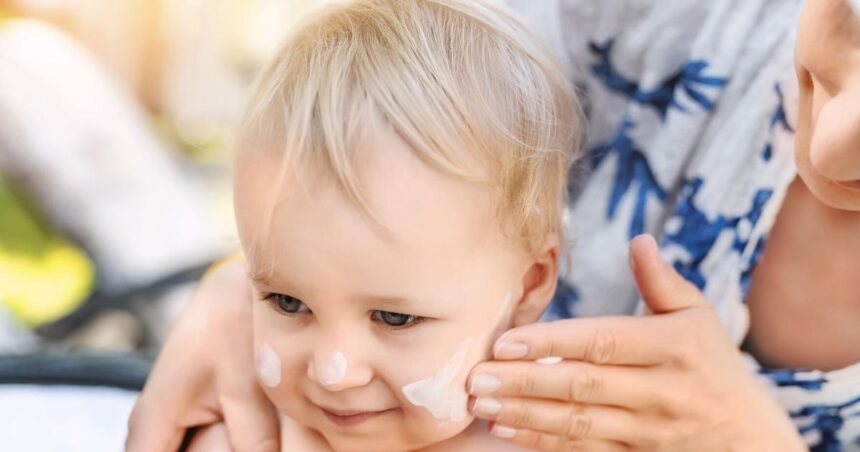Summer is on the horizon and that means there are a lot of sunny days ahead! Great weather leads to more exposure to the sun which, when not done safely, can result in skin damage. Did you know that at least 25% of our lifetime sun exposure happens during childhood and adolescence? Since children spend a lot of time outdoors, especially in the summer, it’s important to protect them. According to the Skin Cancer Foundation, more than 9,500 people are diagnosed with skin cancer every day in the United States. Skin cancer is the most preventable of all the cancers and there are precautions you can take every day to limit your exposure and risk. Here are some tips on how to safely enjoy those days outside and avoid too much exposure to the sun’s harmful rays.
Gina Morigeau
Who needs sunscreen?
Everyone! It is recommended that men, women and children over 6 months old, regardless of their skin tone or tendency to burn, wear sunscreen with a Sun Protection Factor (or “SPF”) of 30 or higher. Babies under the age of six months have very sensitive skin and have a harder time regulating their body temperature. It is safer to keep this age range out of the sun and use shade and sun protective clothing instead.
People are also reading…
What type of sunscreens are there?
There are a lot of different sunscreens out there and the choices can be overwhelming, so let’s break it down. There are two types of sunscreen:
- Chemical sunscreen protects skin by absorbing UV rays like a sponge, which are then converted into heat that is released by the skin. Chemical sunscreens are absorbed into the skin so they tend to rub in easily and do not leave a white cast, but it does take about 20 to 30 minutes before it starts working. The active ingredients include avobenzone, octinoxate and oxybenzone.
- Mineral or physical sunscreen sits on top of the skin, creating a barrier that rays reflect off of before they reach the skin. It can be a little harder to rub in and may leave a little white cast on the skin. Mineral sunscreen starts to work as soon as it is applied. The active ingredients are zinc oxide and titanium dioxide.
Which sunscreen is best?
Both chemical and mineral SPF have been tested as safe and effective, so the best sunscreen is the sunscreen that you and your family will actually want to use! Make sure to use a sunscreen that says “broad-spectrum” on the label, meaning it blocks both UVA and UVB rays.
When do I apply sunscreen?
For sunscreen to do its job, it must be used correctly. Here are a few tips how:
- Apply sunscreen daily, and especially when you and your family are going to be out in the sun. The Skin Cancer Foundation recommends a sunscreen with a SPF of 15 if you are indoors for most of the day with occasional sun exposure (like walking your dog or driving to school or work), and a SPF of 30 or higher if you plan on spending a lot of time outdoors.
- It is recommended to apply your sunscreen before you get dressed every day to account for shifting clothing or if you remove layers throughout the day. Try to apply it 15-30 minutes before going outside. Don’t forget to cover your ears, feet, ankles and neck!
- Apply sunscreen generously! Dermatologists recommend using one ounce of sunscreen (enough to fill a shot glass or plastic medicine cup) to cover exposed areas of the entire body.
- Apply a water-resistant sunscreen if you will be around water or swimming. The water reflects and intensifies the sun’s rays, so protection that lasts is important. Be sure to reapply after swimming or excessive sweating.
- No matter the SPF you choose, reapplication every two hours is key.
Consistently wearing sunscreen with a SPF 30 or higher and limiting your sun exposure will greatly reduce your risk of skin cancer and teach your kids good “sun sense.” It is important to remember that skin damage is cumulative, meaning it adds up over time, so the earlier you start your kid on a good skin protection routine, the better. Enjoy the sun safely as a family this summer!
Gina Morigeau, LE is a licensed medical aesthetician at St. Peter’s Health Plastic Surgery and Medical Aesthetics. She graduated from the Montana Academy of Salons after she received her Bachelor of Arts from Carroll College in 2015.





